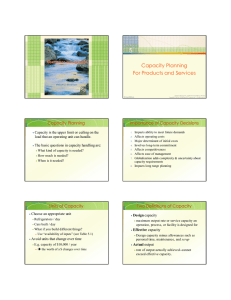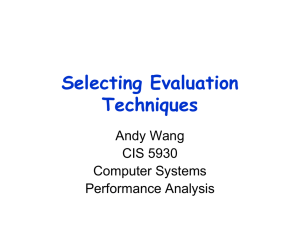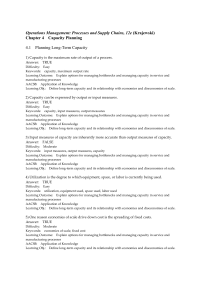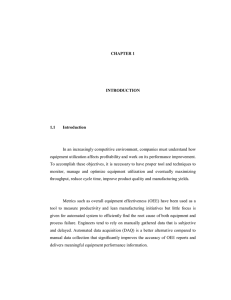STUDY OUTLINE FOR CHAPTER 3
advertisement
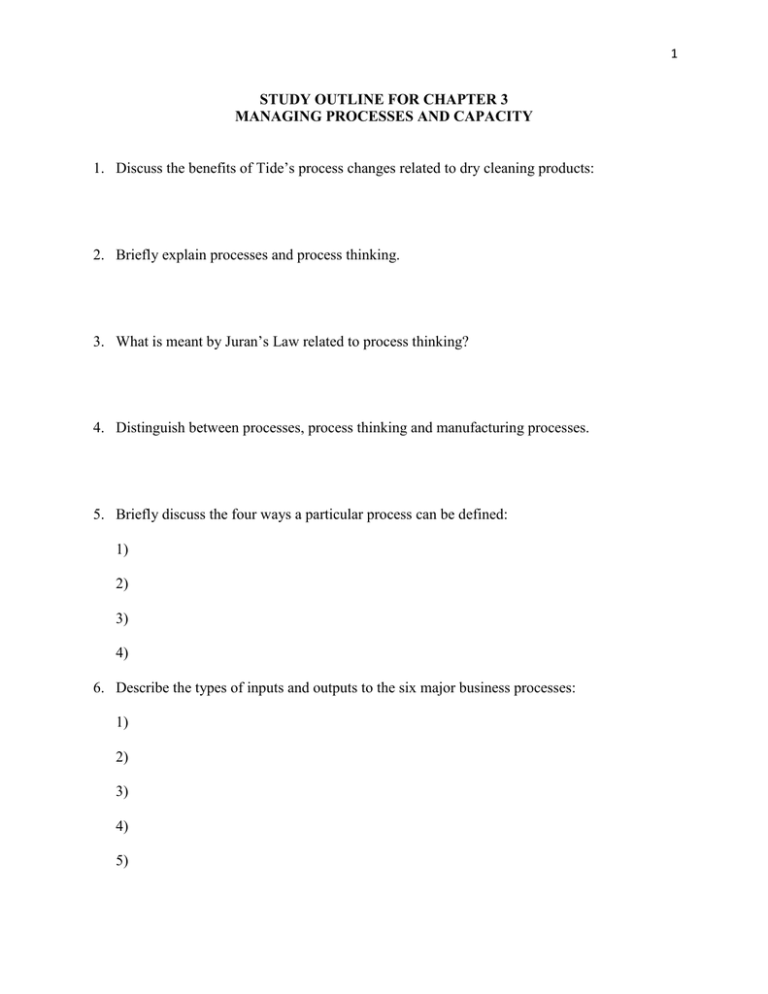
1 STUDY OUTLINE FOR CHAPTER 3 MANAGING PROCESSES AND CAPACITY 1. Discuss the benefits of Tide’s process changes related to dry cleaning products: 2. Briefly explain processes and process thinking. 3. What is meant by Juran’s Law related to process thinking? 4. Distinguish between processes, process thinking and manufacturing processes. 5. Briefly discuss the four ways a particular process can be defined: 1) 2) 3) 4) 6. Describe the types of inputs and outputs to the six major business processes: 1) 2) 3) 4) 5) 2 6) 7. Discuss the inputs, outputs and flows of process activities: 8. Discuss how structure limits process capabilities: 9. Define process capacity and utilization: 10. Discuss the two ways capacity limits are often expressed: 1) 2) 11. Contrast maximum capacity, design capacity, effective capacity, utilization and yield rate: 12. List and discuss the three types of capacity planning strategies: 1) 2) 3) 13. How do capacity concerns differ as strategic decisions compared to tactical decisions and operational decisions? 3 14. Define the following terms: Economies of scale Learning curve Diseconomies of scale 15. List and discuss the reasons that economies of scale occur: 1) 2) 3) 4) 16. Briefly discuss the theory of constraints (TOC) and the five key principles of the TOC: 1) 2) 3) 4) 5) 17. What is a bottleneck activity? 18. Discuss the difference between serial/sequential and parallel structures: 19. How should the awareness of bottlenecks inform a firm’s investment strategies? 4 20. Discuss Little’s law and explain how it relates flow time to inventory and throughput rate: 21. Define and discuss flow time, cycle time, and wait time: 22. How do bottlenecks negatively impact inventory control efforts? 23. How can an operations manager estimate capacity requirements? 24. Identify types of variability and give an example of their effects on capacity: 1) 2) 3) 4) 5) 6) 7) 25. Discuss the three basic ways to deal with variability in a process: 1) 2) 5 3) 26. Why should processes be managed as a system instead of individually? 27. Discuss why performance measures are crucial to the process’s success, and define the term metrics: 28. List the two characteristics of effective metrics: 1) 2) 29. Discuss the three ways to insure that metrics motivate process behaviors to increase customer value: 1) 2) 3) 30. Why is continuous improvement necessary in operations management? 31. Define Kaizen events, and identify the four key traits of Kaizen events: 1) 2) 3) 4)







